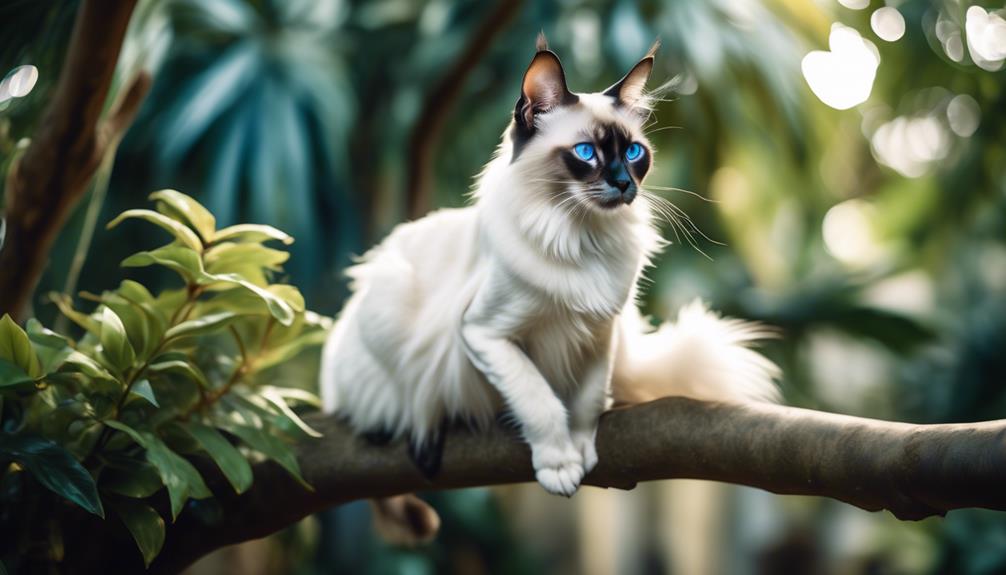
The Balinese cat is an extraordinary feline that possesses an air of elegance and grace like no other. With their mesmerizing beauty and captivating personalities, it’s no wonder that they have gained a devoted following among cat enthusiasts.
But there is much more to the Balinese than meets the eye. From their fascinating history to their unique coat characteristics, there is a wealth of information and intriguing characteristics to explore.
So, let’s unravel the secrets of this enchanting breed and discover what sets them apart from the rest.
Key Takeaways
- Balinese cats are a longhaired variety of Siamese cats known for their silky medium-long coats and color-pointed markings.
- They are intelligent, playful, and affectionate, making them great family companions.
- Balinese cats are generally healthy but may be prone to certain genetic health conditions such as hypertrophic cardiomyopathy and strabismus.
- Regular grooming, including weekly brushing and dental hygiene, is important for maintaining their fine coat and overall health.
Origin and History
The Balinese cat breed has an interesting origin and history in the United States. While longhaired Siamese cats had been occasionally seen in litters, they were considered flaws and kept as pets. It wasn’t until the 1940s and 1950s that breeders began intentionally developing the Balinese breed.
The name ‘Balinese’ was chosen because these cats resembled the dancers on the Indonesian island of Bali. The Balinese is essentially a longhaired variety of the Siamese breed. Some breed associations consider the Balinese and Javanese the same breed, but the Cat Fanciers’ Association designates the Javanese as a subgroup.
The Balinese has gained recognition from multiple cat registries, including the Cat Fanciers’ Federation and The International Cat Association.
See another cat breed profile.
Bambino Mixed Cat Breed
Size and Breed Group
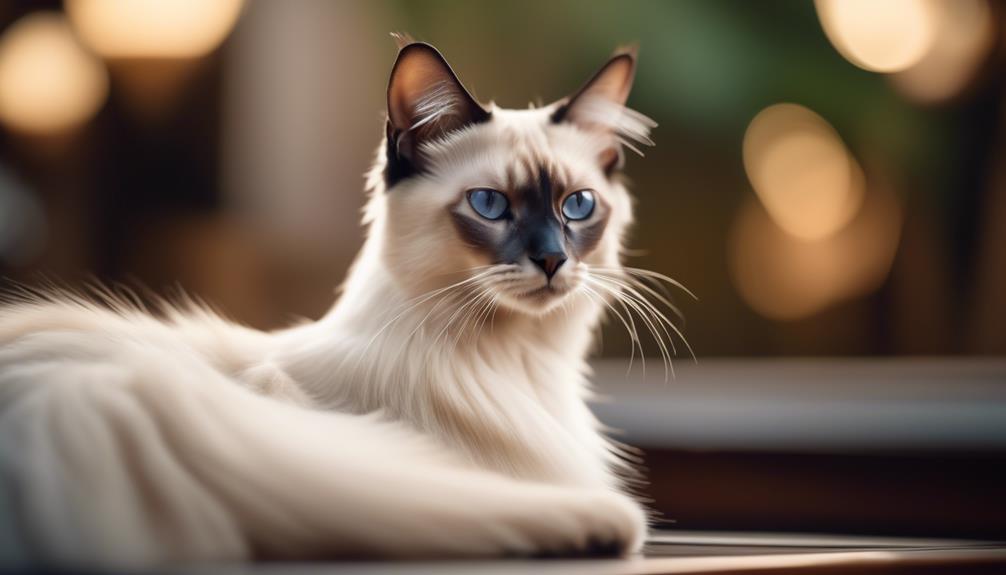
With a medium size and belonging to the longhair breed group, the Balinese cat is known for its elegance and grace. Despite its name, the Balinese isn’t actually from Bali but rather originated in the United States.
This breed is characterized by its svelte and muscular body, wedge-shaped head, and large ears. The Balinese have a medium-length coat that’s fine and silky, with the longest fur found on the tail. In terms of color, the Balinese come in seal, chocolate, blue, and lilac point colors, all complemented by their deep blue eyes.
As a member of the longhair breed group, the Balinese require regular grooming to prevent mats and tangles.
Lifespan and Coat Characteristics
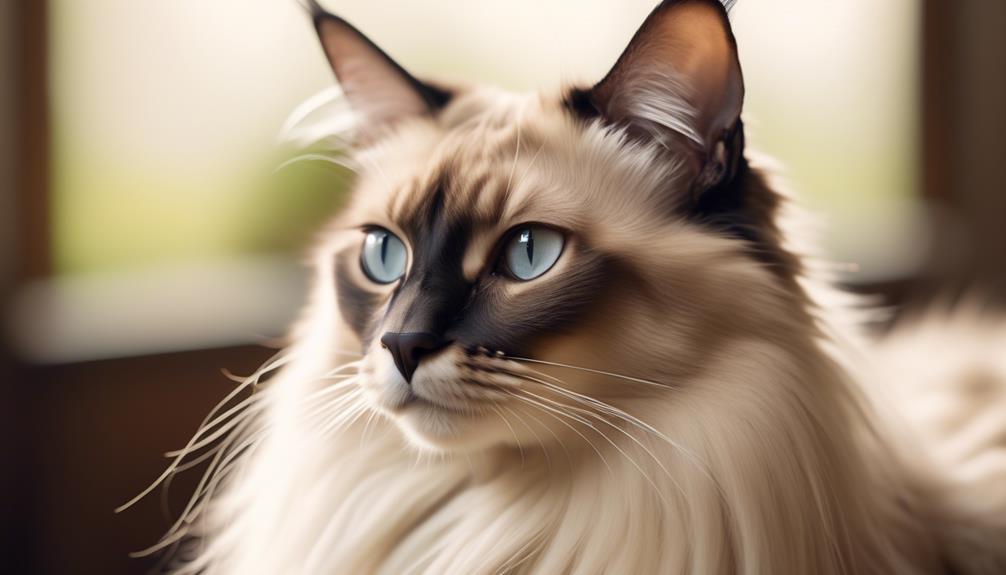
After discussing the size and breed group of the Balinese cat, it’s important to explore its lifespan and coat characteristics.
The Balinese cat has a lifespan of 12-20 years, which is relatively long compared to other cat breeds.
As for its coat, the Balinese has a medium-long, silky coat that’s color-pointed, meaning the body is a lighter shade while the face, ears, paws, and tail are a darker hue. The coat colors include seal, chocolate, blue, lilac, and tortoiseshell.
The Balinese coat is known for its softness and elegance. Regular grooming, such as weekly brushing, prevents mats and tangles.
Balinese and Javanese Relationship
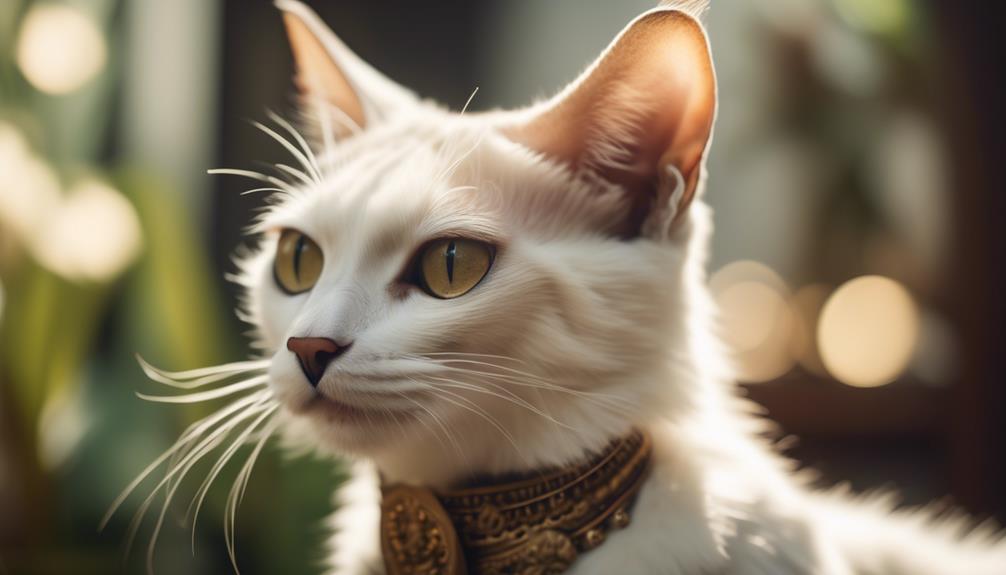
In considering the relationship between the Balinese and Javanese cats, it’s important to note that some breed associations consider them the same breed. However, the CFA designates the Javanese as a subgroup. Despite this distinction, there are several similarities between the two breeds:
- Both breeds have a medium-long, silky coat that’s color-pointed, with colors such as seal, chocolate, blue, lilac, and tortoiseshell.
- They both have a svelte and muscular body with a wedge-shaped head, large ears, and almond-shaped eyes.
- Both breeds are known for their affectionate and playful temperament, making them great companions for families and individuals.
While there may be some differences in breed standards and recognition, the Balinese and Javanese cats share many common characteristics that make them beloved pets among cat lovers.
Allergy-Friendly Breed
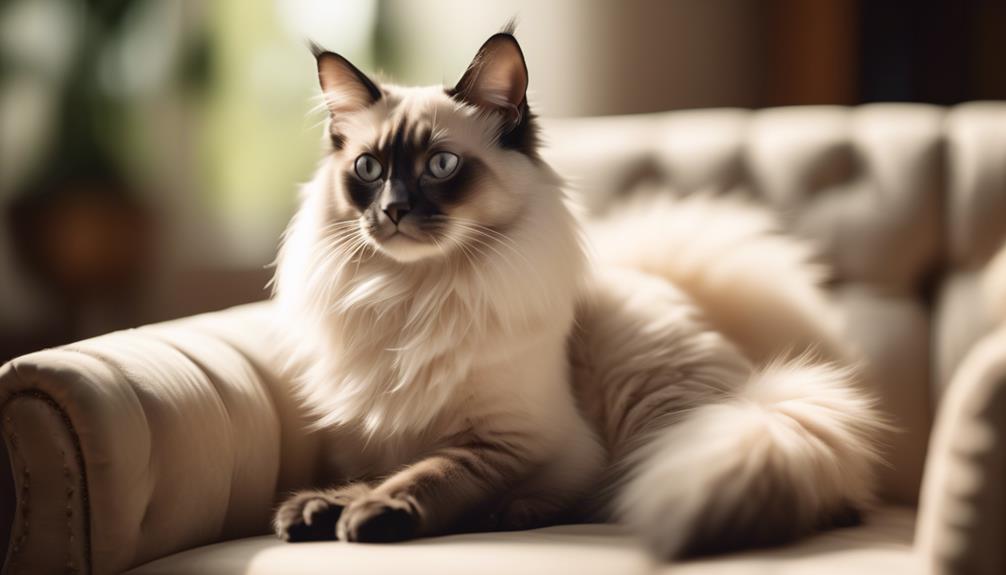
Balinese cats are an ideal choice for allergy sufferers due to their lower production of protein allergens that cause reactions. Unlike other cat breeds, Balinese cats produce less of the Fel d 1 protein, the main allergen responsible for triggering human allergies. This protein is produced in the cat’s saliva and sebaceous glands, spreading throughout their fur during grooming.
The reduced production of this allergen in Balinese cats makes them a hypoallergenic breed, meaning they’re less likely to cause allergic reactions in people sensitive to cats. However, it’s important to note that no cat breed is completely hypoallergenic, and individual reactions may vary. Regular grooming and maintaining a clean environment can also help minimize allergens in the home.
Naming and Cultural Significance
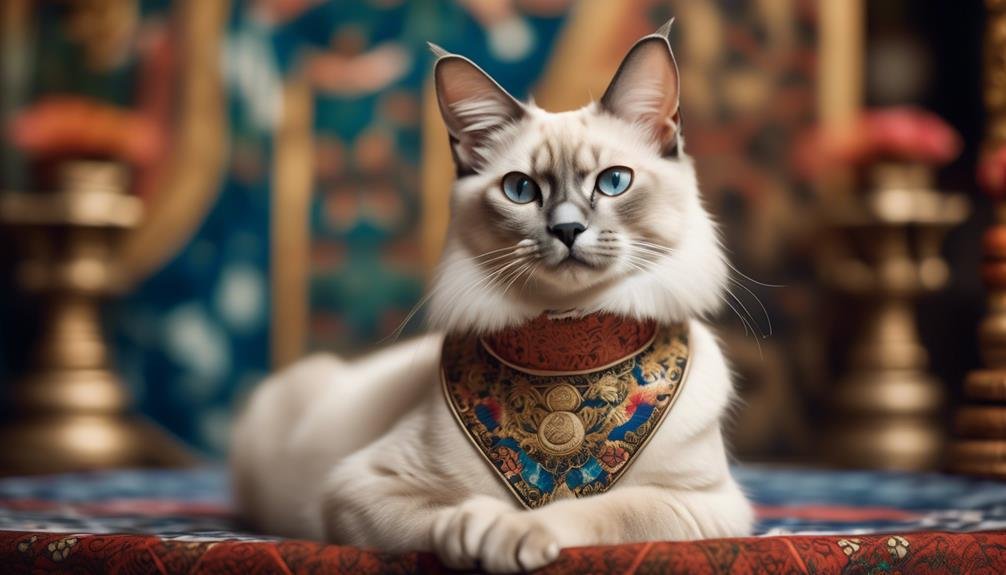
The name ‘Balinese’ derives from the dancers on the Indonesian island of Bali. These dancers are known for their graceful movements and elegant performances, which mirror the sleek and agile nature of the Balinese cat.
The name not only pays homage to Bali’s cultural significance but also captures this breed’s grace and beauty. The Balinese cat’s name holds cultural significance and reminds of the breed’s origins.
It’s a testament to the connection between humans and animals, highlighting the mutual appreciation and admiration for artistry and beauty. Whether in a show ring or a loving home, the name ‘Balinese’ symbolizes the feline’s poise and elegance, honoring its cultural heritage and creating a sense of pride for owners and enthusiasts alike.
Development of the Breed
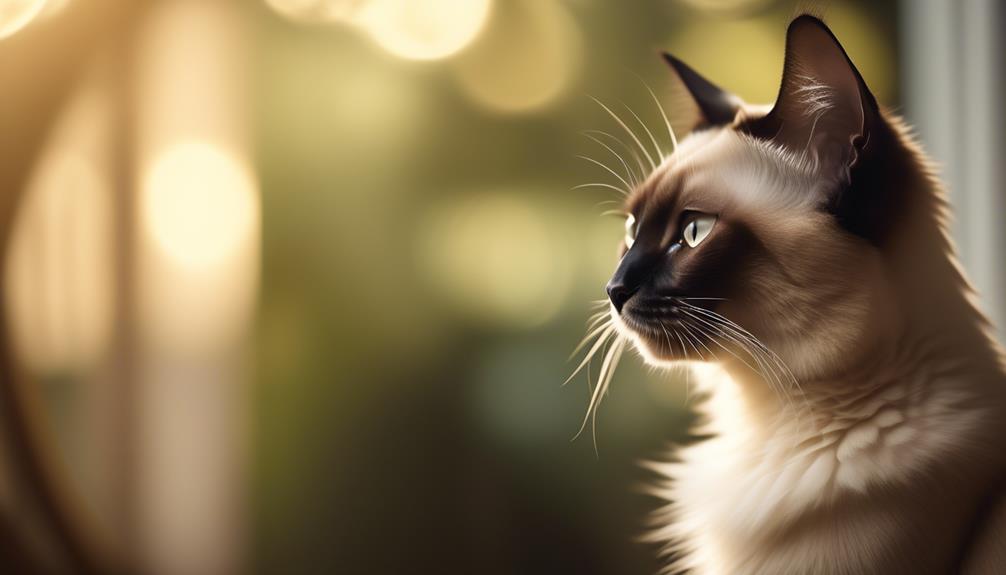
With its name paying homage to the cultural significance of Bali, the Balinese cat’s development as a breed is a fascinating journey. The Balinese is a longhaired variety of the Siamese cat, and its origins can be traced back to the 1940s and 1950s. Whether the long hair is a natural mutation or a result of crossbreeding is unknown. The breed was initially considered a flaw, and longhaired Siamese kittens were exclusively kept as pets. However, over time, breeders recognized these cats’ unique beauty and charm and began selectively breeding them to create the Balinese as a distinct breed. Today, the Balinese is recognized by multiple cat registries and is cherished for its elegant appearance and affectionate temperament.
| Development of the Breed | |
|---|---|
| Origins | 1940s and 1950s |
| Hair Length | Long |
| Breed Recognition | Multiple registries |
Recognition by Cat Registries
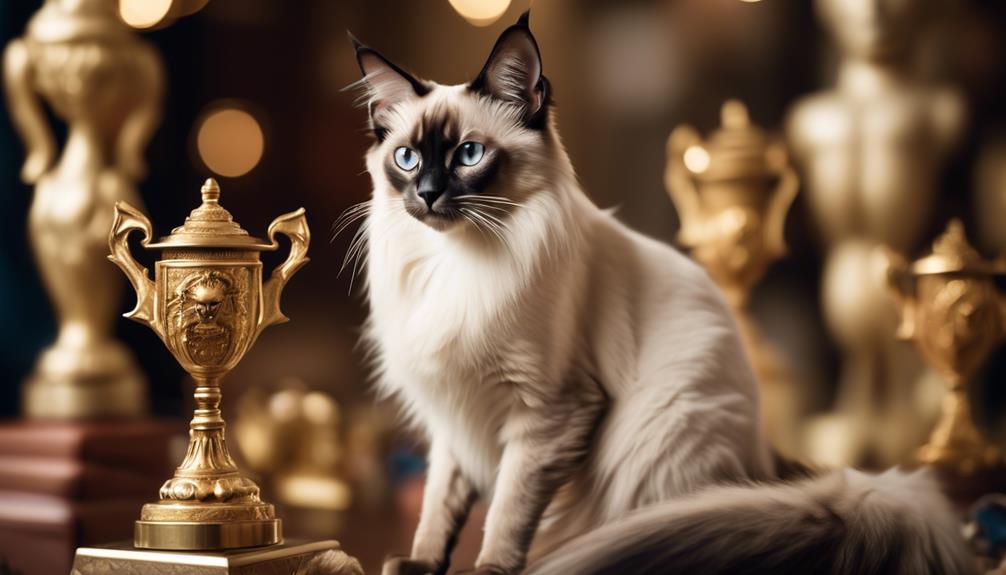
Recognized by various cat registries, the Balinese breed has gained acknowledgment for its distinct characteristics and allure. This recognition highlights the breed’s popularity and its adherence to breed standards.
The Cat Fanciers Federation, Cat Fanciers Association, American Cat Fanciers Association, and The International Cat Association are among the registries officially recognizing the Balinese. This recognition provides breeders and owners with reassurance about the breed’s authenticity and allows Balinese cats to participate in various cat shows and competitions.
Additionally, being recognized by these registries helps promote the breed and its unique qualities to a wider audience of cat enthusiasts. Overall, the recognition by cat registries adds credibility and prestige to the Balinese breed.
Long Hair Mutation or Crossbreeding?
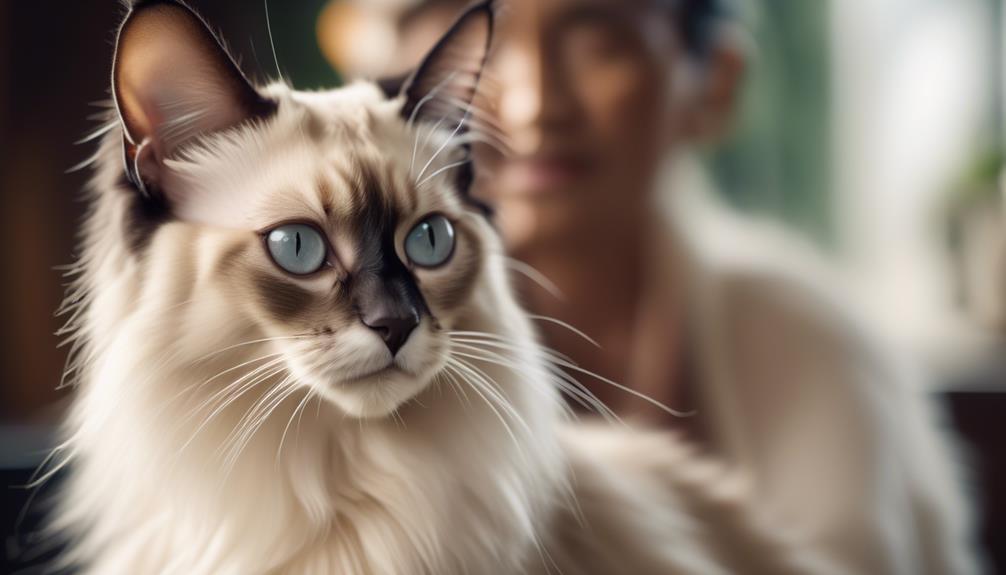
The origin of the Balinese cat’s long hair is still debated, whether it’s a result of a natural mutation or crossbreeding.
Some believe that the long hair is a natural mutation within the Siamese breed. Longhaired Siamese kittens were occasionally born in the litter but were considered flawed and only kept as pets.
Others argue that the long hair in Balinese cats results from crossbreeding with other longhaired cat breeds, such as the Angora or the Persian. However, the exact origins of the Balinese’s long hair remain uncertain.
The Balinese’s medium-long, silky coat, regardless of origin, adds to its elegant and regal appearance.
Balinese as a Longhaired Siamese
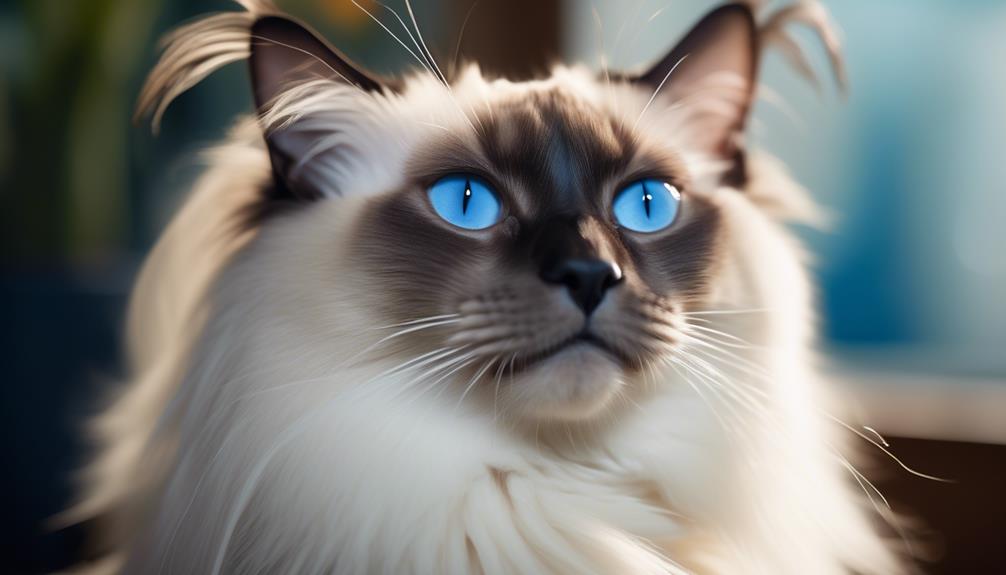
The Balinese cat is often called a longhaired variety of the Siamese breed. The Balinese share the same elegant body shape, wedge-shaped head, large ears, and almond-shaped eyes as the Siamese. However, some distinct differences set the Balinese apart.
The Balinese have a medium-length coat that’s fine and silky, with the longest fur on the tail. This luxurious coat comes in color points, such as seal, chocolate, blue, and lilac, similar to the Siamese.
Despite their long hair, Balinese cats are known for producing less of the protein allergens that cause allergic reactions in humans. This makes them a great choice for allergy sufferers who still want the beauty and grace of a longhaired cat.
Balinese cats are intelligent, playful, and affectionate like their Siamese counterparts. They enjoy being around their human companions and will often follow them around the house, eager to be helpful.
Temperament and Care
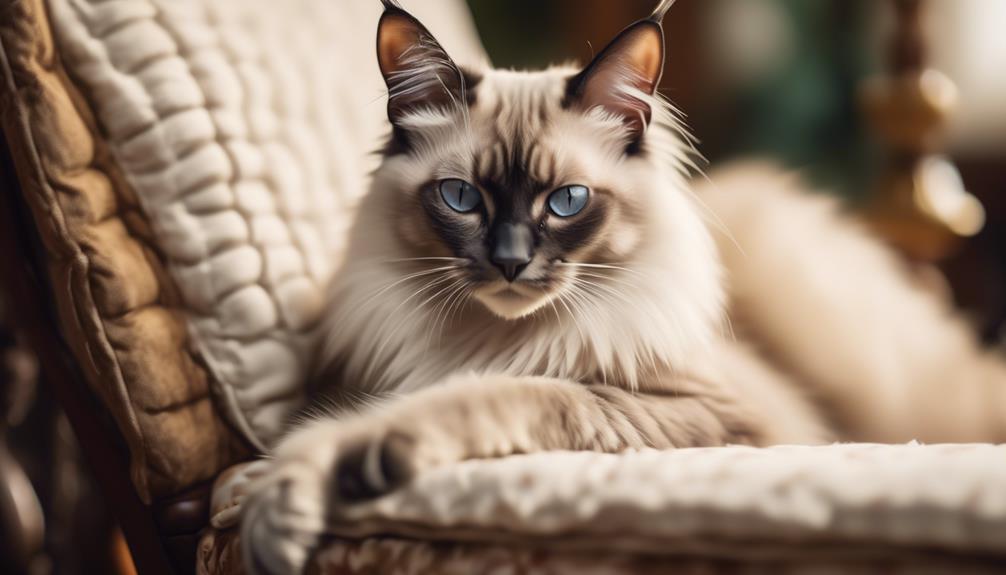
With their intelligent and playful nature, Balinese cats require specific care to ensure their well-being. They are affectionate with their family and enjoy being helpful by following them around. Balinese cats are known for their fondness for sitting on laps and sleeping in bed with their owners. They are also opinionated and will express their thoughts. Regular veterinary care is important to monitor their health, as they can be prone to certain genetic conditions such as hypertrophic cardiomyopathy and strabismus. Grooming the Balinese is relatively easy, as their fine, silky coat only requires weekly brushing to prevent mats and tangles. Additionally, regular combing, dental hygiene, and cleaning of the eyes and ears are necessary for their overall well-being.
| Temperament | Care |
|---|---|
| Affectionate | Regular veterinary care |
| Playful | Weekly brushing to prevent mats and tangles |
| Intelligent | Regular combing to remove dead hair |
| Vocal | Occasional baths |
| Opinionated | Dental hygiene for preventing periodontal disease |
Health and Grooming Requirements
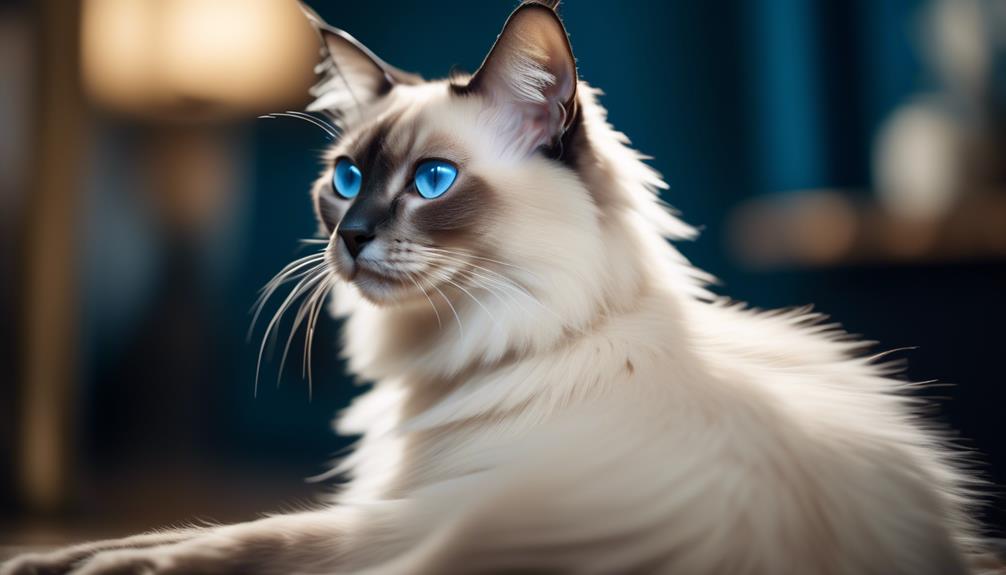
Regular grooming and proper healthcare are essential for maintaining the health and well-being of Balinese cats. These cats have a medium-length, fine, and silky coat that requires weekly brushing to prevent mats and tangles. Occasional baths are rarely necessary, as their coat is easily cared for.
In addition to grooming, it’s important to provide regular veterinary care to address any potential health issues. Balinese cats are generally healthy but can be prone to certain genetic health conditions, such as hypertrophic cardiomyopathy (HCM) and strabismus (crossed eyes).
To ensure their overall health, it’s crucial to maintain their dental hygiene by regularly cleaning their eyes and ears and keeping the litter box clean.
Frequently Asked Questions
Are Balinese Cats Good With Other Pets in the Household?
Balinese cats are generally good with other pets in the household. They are friendly and pleasant, making it easier for them to get along with other animals.
Do Balinese Cats Require a Lot of Exercise?
Balinese cats require a moderate to high amount of exercise. They are intelligent, agile, and athletic, so engaging them in playtime and providing opportunities for physical activity is important for their overall well-being.
What Is the Average Weight of a Balinese Cat?
The average weight of a Balinese cat is around 6 to 11 pounds. These cats are known for their svelte and muscular bodies, contributing to their agility and athleticism.
Can Balinese Cats Be Left Alone for Long periods?
Balinese cats should not be left alone for long periods as they are social and affectionate. They thrive on human companionship and can become lonely or anxious if left alone for extended periods.
Are Balinese Cats Prone to Any Specific Behavioral Problems?
Balinese cats are generally not prone to specific behavioral problems. However, like cats, they may exhibit common feline behaviors such as scratching furniture or marking territory. Providing proper enrichment and training can help prevent and manage these behaviors.
Conclusion
In conclusion, the Balinese cat is a unique and beautiful breed that brings joy and companionship to any household. With their intelligence, playfulness, and affectionate nature, they make excellent companions for families and individuals.
Their moderate exercise needs and easy trainability make them a joy to care for. Additionally, their allergy-friendly coat and overall good health make them a great choice for those with allergies.
Overall, the Balinese cat is a wonderful addition to any home.




